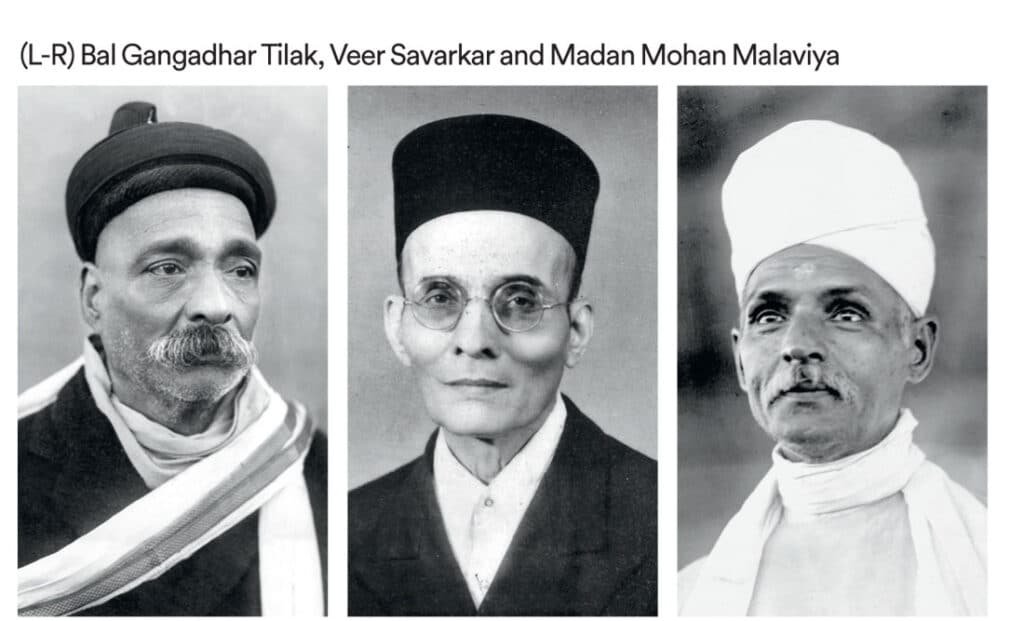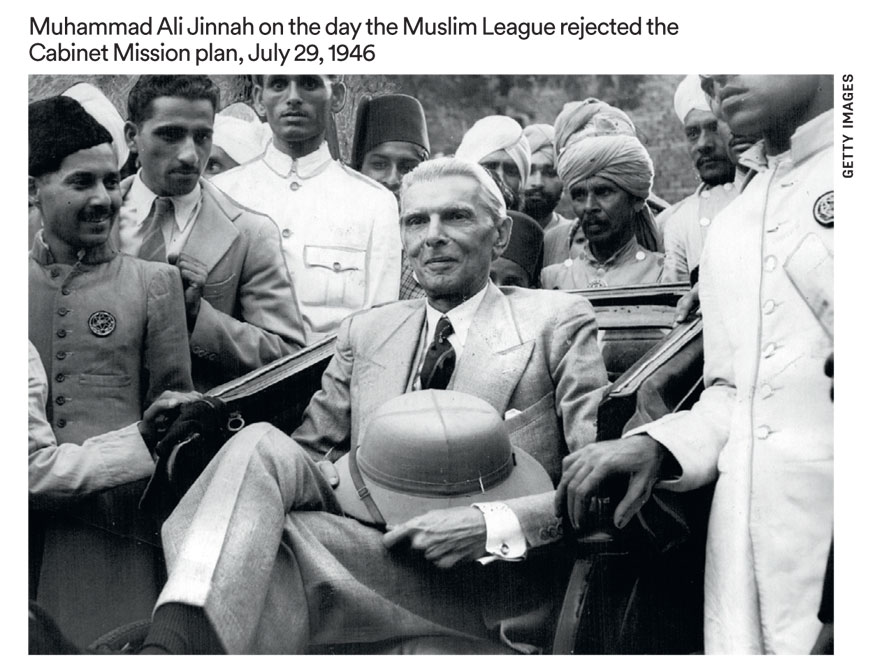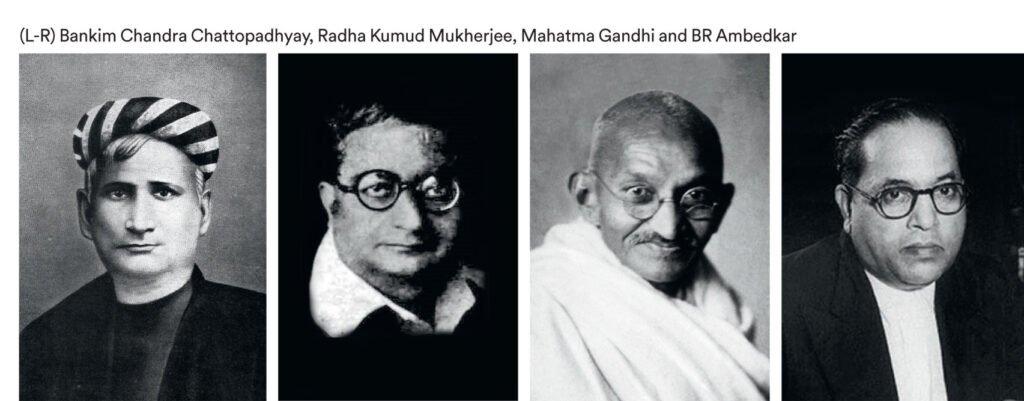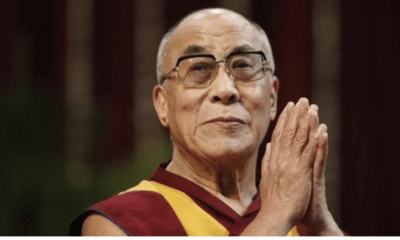
|
Getting your Trinity Audio player ready...
|
RSS is an idea that is still evolving
THE RASHTRIYA SWAYAMSEVAK Sangh (RSS) is difficult to understand and easy to misunderstand. Founded in 1925 and nearing its centenary, it is still growing. Very few non-governmental organisations survive for such a long time. It remains an enigma to many. It has its detractors, mainly among the liberal intelligentsia and the left academia. There are people among India’s minority community who harbour apprehensions about its intentions. And it has vast cross-sections of Indian society that admire and adore it. At the end of the day, it can be abhorred or admired, but it cannot be ignored.
NOT IDEOLOGY, BUT AN EVOLVING IDEA
“All ideologies are idiotic, whether religious or political, for, it is conceptual thinking, the conceptual world, which has so unfortunately divided man”, bemoaned Jiddu Krishnamurti. Europe was the mother of ideologies—from Adam Smith’s capitalism to the social conservatism of Thomas Hobbes and John Locke to the liberalism of John Stuart Mill to the communism of Karl Marx. These ideologies have resulted in schisms in the world, as Krishnamurti pointed out. The American historian and social thinker Morris Berman had warned that “An idea is something you have; an ideology is something that has you”.
India has historically been the land of ideas. From the Vedic times through Mahaveera, Buddha, Shankara, Aurobindo, Vivekananda and Gandhi, the great men of India have only been philosophers, articulating profound ideas for the welfare of mankind.
RSS, too, was born not with an ideology but as an idea. When Keshav Baliram Hedgewar, the medical doctor from Nagpur and a Congress-ite freedom fighter, founded the organisation on Vijayadashami in 1925, it did not have a name nor a constitution. The name came through deliberations among the original members after a couple of months. The constitution came only after a couple of decades, in 1949.
RSS, in essence, is a constantly evolving idea. It has a twin vision—individual perfection at the micro level and social cohesion and unity at the macro level. It changed with the times, adopted new things and adapted to new situations, but it never let go of the focus from its twin vision. Critics mistook RSS to be a fossilised body of obscurantists stuck in a time warp. But it is the critics, as pointed out by Badri Narayan in his recent book Republic of Hindutva, that are stuck in that time warp in their understanding of the organisation.
THE TWIN VISION OF HINDUTVA
The initial idea that inspired Hedgewar and his young band of followers was a simple one. India suffered slavery not because of lack of strength but because of lack of individual character and social unity. Even BR Ambedkar had talked about it in his famous “Three Warnings” speech in the Constituent Assembly. “It is not that India was never an independent country. The point is that she once lost the independence she had. Will she lose it a second time? What perturbs me greatly is the fact that not only India has once before lost her independence, but she lost it by the infidelity and treachery of some of her own people”, Ambedkar had said.
Hedgewar too had held a similar understanding of Indian history. At the time of its inception, he gave two goals to the organisation: One, to organise Hindu society at the local level; and two, to strive for independence. Those were times when many national leaders believed that Hindu social reform was an essential part of the nationalist movement. Bal Gangadhar Tilak strove for it; Madan Mohan Malaviya worked for it; Veer Savarkar and Ambedkar agitated for it; and Gandhi made it an integral part of the independence struggle.
The simple twin vision of Hedgewar was given greater philosophical finesse by his successor MS Golwalkar aka Guruji. Hedgewar was a revolutionary and freedom fighter and hence his thrust was socio-political. Golwalkar was an ascetic, trained in the Ramakrishna Mission. He gave a dharmic, semi-spiritual orientation to the organisation. Through his 33-year leadership, Golwalkar gave a philosophical locus for the idea of RSS.
The culmination of the independence movement was the liberation of India, but the leadership’s failure in preserving national emotional and territorial integrity had led the evolution of the idea of RSS to a second stage. Golwalkar decided to give pre-eminence to the mission of alleviating Ambedkar’s apprehensions about India losing its independence a second time and averting future partitions. He got the idea of RSS transfused with the age-old cultural and civilisational identity of India, which he described as the Hindu Rashtra. Such an overarching identity can only sustain the emotional and territorial integrity of the nation, he averred. Articulations like Radha Kumud Mukherjee’s book The Fundamental Unity of India (1914) to Bankim Chandra Chattopadhyay’s poem ‘Vande Mataram’ (included in his 1882 novel Anandamath) to Gandhi’s ‘Ram Rajya’ had all expressed the same spirit.
INCLUSIVE, NOT EXCLUSIVE
There was hardly any dispute over India’s cultural oneness until the Muslim League came up with the dubious construct that the “Hindu identity meant anti-Muslim”. The defensive few among the Congress leadership had accepted this false narrative in their anxiety to appease Muhammad Ali Jinnah and the League. The leftist intelligentsia had further fuelled this misnomer. But proponents like Golwalkar and Savarkar had never agreed with that hypothesis and insisted upon the inclusive character of the concept of Hindu.
In his 1923 work titled Essentials of Hindutva, Savarkar talked about the suspicion that “crept into the minds of some of our well-meaning but hasty countrymen that the origin of the words Hindu and Hindusthan is to be traced to the malice of the Mohammedans” and called it “singularly stupid”. “Long before Mohammad was born, nay, long before the Arabians were heard of as a people, this ancient nation was known to ourselves as well as to the foreign world by the proud epithet Sindhu or Hindu”, he wrote.

Golwalkar too was categorical in dismissing the propaganda that RSS was out to convert all to Hinduism. In an interview to a visiting Iranian scholar, Saifuddin Jeelany, in 1971, Golwalkar said: “Let us all realise that we are all the children of this soil, and we must have our allegiance to this land. We belong to the same society and that our ancestors are common. That our aspirations are also common. Understanding this is Indianisation in the real sense. Indianisation does not mean that one should be asked to quit his religious system. We neither said this, nor we are going to say so”. Going further, Golwalkar insisted: “Follow your own religion. The God of Islam, Christianity and Hinduism is the same and we are all His devotees. Give people true knowledge of Islam. Give people true knowledge of Hinduism. Educate them to know that all religions teach men to be selfless, holy and pious. Indianisation does not mean making all people Hindus.”
Golwalkar was not alone in insisting on the “common ancestry” and “common aspirations” for all Indians. In a passionate speech to the students of the Aligarh Muslim University in 1948, Prime Minister Jawaharlal Nehru had exhorted: “I have said that I am proud of our inheritance and our ancestors who gave an intellectual and cultural pre-eminence to India. How do you feel about the past? Do you feel that you are also the sharers in it and inheritors of it, and therefore proud of something that belongs to you as much as to me? Or do you feel alien to it and pass it by without understanding it or feeling that strange thrill which comes from the realisation that we are the trustees and inheritors of this vast treasure? You are Muslim and I am a Hindu. We may adhere to different religious faiths or even none; but that does not take us away from that cultural inheritance that is yours as well as mine. The past holds us together; why should the present or the future divide us in spirit?”
The reported assertion of RSS chief Mohan Bhagwat in 2018—“If we do not accept Muslims, it’s not Hindutva. Hindutva is Indianness and inclusion”—should put to rest various criticisms of the core philosophy of Hindutva.
A BOTTOM-UP LEADERSHIP MODEL
From Gandhi and Ambedkar to Pranab Mukherjee, many who had a firsthand experience of RSS were baffled by its organisational ability and disciplined rise. RSS is undoubtedly the world’s largest non-governmental body today, with over 60,000 daily meeting Shakhas (branches) and dozens of allied organisations described as the Sangh Parivar. Its cadre run more than two lakh service activities and about 25,000 schools. Its members occupy high positions in politics and public life.
Yet, this gigantic organisation runs in a nondescript and smooth manner. It has not split even once, nor was there any leadership tussle ever. Successive Sarsanghchalaks—the chiefs of the organisation—appointed their successors, not necessarily the seniormost leaders, without any fuss. When Golwalkar, a relatively new entrant and just 35 years of age, was picked by Hedgewar to succeed him in 1940, several members went to Hedgewar’s seniormost follower Appaji Joshi insisting that he should become the chief. Appaji Joshi’s reply was typical of the organisational culture that RSS had nurtured. He was no doubt the righthand man of Hedgewar, Joshi told the members, adding, “Golwalkar was Hedgewar’s heart”. I vividly remember an incident when KS Sudarshan succeeded as the Sarsanghchalak in March 2000 at Nagpur. Atal Bihari Vajpayee was the prime minister and hence the succession in RSS was keenly watched by the media. They accosted HV Seshadri, who was senior to Sudarshan and regarded by many as the natural successor of Rajendra Singh, asking him whether he was disappointed. Seshadri looked at them and said in all humility, “I am not qualified to be the chief.”

That the most powerful position of the head of RSS can change hands so naturally is unimaginable in the present political milieu. The RSS leadership is revered. Yet, the real power lies in its unique organisational structure. Like the Jain philosophy of Anekanta, the RSS structure is a complex web and true power lies with multiple grassroots units. Like Sun Tzu’s philosophy of The Art of War, it keeps multiple targets to achieve its objective. Like the republics of the medieval era, it built a strong culture of collective leadership at the top and abhorred individual supremacy. Apart from the first two chiefs, RSS has resisted the temptation of according any special status to other leaders.
It built a fascinating bottom-up leadership model. Its cadre at the grassroots wear PPE kits as effortlessly as they wear their uniform. They reach out to tribes living in remote jungles as enthusiastically as they approach software professionals in a metropolitan city.
Decentralism and collective decision-making form the core of RSS’ organisational functioning. Some find it frustrating and insist that RSS was too slow to respond to situations. One senior political leader had once compared RSS to a tortoise. A turtle is never in a hurry. It keeps its pace. When attacked, it simply withdraws its limbs under its shell. This analogy is inaccurate. RSS has always been one of the first responders in times of crises. In achieving its targets too, the organisation has a commendable record. Karl Marx and Friedrich Engels had authored The Communist Manifesto in 1848, but it took 70 years for the first communist government to be established by Lenin in Russia. Liberal ideas took much longer to find coherent manifestation. Comparatively, the turtle in India has done well. Its members were in government by 1977 and were leading in many areas of public life by the stroke of the new century.
The turtle analogy can perhaps be applied to its response to criticism in the past. RSS was subjected to unjust criticism for decades and stereotyped as fascist, Hitlerian, etcetera. For many decades, RSS did not choose to respond in any conventional way. “To know the RSS, be in the RSS” was its response. Over last three decades, however, the organisation has built a robust mechanism for public engagement and propaganda.
A fascinating journey of over nine decades has brought RSS out of the fringes of Indian society onto the national centrestage today. A journalist once confessed to me some years ago that as a liberal he considered RSS as the greatest enemy of India: “I used to think that you are a lunatic fringe, and it is my duty to expose you. After criticising you as a fringe element for two decades, here I am, interviewing you on my channel. You have become the mainstream and we the fringe.”
SOCIO-CULTURAL VS SOCIO-POLITICAL
The real challenge that RSS faced was not ideological or organisational but political. The first major political attack came in the form of allegations of involvement in Gandhi’s murder. The pind—core ethos—of RSS, when Hedgewar established it, was socio-political. It was Golwalkar who sought to transform it into a socio-cultural one after Independence. A debate ensued wherein some seniors like Balasaheb Deoras, who was to succeed Golwalkar in 1973, and his brother Bhaurao, disagreed with Golwalkar’s insistence on staying away from active politics and even left the organisation for a couple of years. But in his long 33-year stewardship, Golwalkar had firmly established that principle although some senior members were loaned to Syama Prasad Mookerjee’s Bharatiya Jana Sangh.

Golwalkarite socio-cultural identity, to which RSS is wedded to this day, has helped the organisation reap enormous goodwill. Despite initial ideological differences, Nehru found RSS to be virtuous enough to march shoulder-to-shoulder with the Indian Army at the Republic Day parade in 1963. Over 2,500 RSS volunteers had participated in the march upon the invitation of the government. Lal Bahadur Shastri had invited Golwalkar to discuss about support during the India-Pakistan war of 1965. Golwalkar’s demise was condoled in Parliament. Indira Gandhi paid her tribute, saying, “Shri Golwalkar, an eminent personality who was not a member of the House, is no more. He held a respected position in national life by his force of personality and the intensity of his conviction, even though many of us could not agree with him.”
Two important events in the last quarter of the last century impacted RSS’ identity profoundly. First was Emergency (1975-77). Banned by the Government, the Sangh had launched a massive Satyagraha against Indira Gandhi. Thousands of RSS cadres had been asked to fight for a cause primarily linked to their constitutional rights. In 1948, they had held a Satyagraha against the Government for erasing the blemish of Gandhi’s murder. But Satyagraha during Emergency was a different affair. The socio-cultural had to don the mantle of the socio-political. The formation of the Janata Party in 1977 and its collapse on the RSS question in 1980 had drawn RSS further into the political vortex.
he 1980s saw the rise of the Ram Janmabhoomi movement with serious historical-political overtones. RSS took a conscious decision to plunge into it in the mid-1980s after assessing its implications for the organisation. Incidentally, it was Balasaheb Deoras who was at the helm during both these transformative events. The fight against Indira Gandhi’s dictatorship and a decade-long agitation for Ram Janmabhoomi had established the new credentials of RSS as a mainstream social organisation—as not only a cultural but an influential political voice. RSS had challenged pseudo-Western notions like faulty secularism and succeeded in transforming the Indian political landscape from Nehruvian nationalism to cultural nationalism.
Like America, India too is a “Right Nation”. Dharma Praana Bharata—Dharma is the soul of India—proclaimed Swami Vivekananda more than a century ago. Gandhi and RSS firmly believed in this basic national character of India. The post-independence efforts to superimpose a West-inspired superstructure on an essentially religious soil did not succeed much. The shaky superstructure gradually came down by the end of the last century and the essential cultural core of India has started manifesting in all walks of public life. The stigma once attached to the word “Hindu” is no longer there today, nor is the castigation of “Hindu” as communal. Instead, the discourse is about who are real Hindus: RSS or its detractors? No little credit can go to RSS for this fundamental transformation.

In the process, RSS has shed its reticent and enigmatic demeanour and come out more openly in the socio-political arena. From economic policies to border challenges, from environmental issues to homosexuality debates, nothing is anathema anymore. With its vast organisational network, greater engagement with the world outside and adaptation to new technologies, RSS has emerged as a pre-eminent voice that echoes across the country.
The immediate and major beneficiary of the transformed socio-political landscape was the Bharatiya Janata Party (BJP) with which RSS shares an umbilical cord and also human resources. Once considered only a part of the wider Sangh Parivar, BJP has grown into a behemoth. The two organisations maintain a respectable distance at the top, on the principle of “consultative non-interference”. While sharing human resources with the Jana Sangh, Golwalkar had envisioned a relationship like that of the two rails of a railway track which never meet but never go apart either. The prospect of the socio-political overpowering the socio-cultural down the organisational hierarchy is not imaginary anymore and the RSS leadership is conscious of that critical challenge. Upholding the moral authority of the latter and ensuring that the political arm steadies itself in the storm of realpolitik is a task that requires humungous skill and acumen on the part of the Sangh leadership.
THE CHALLENGE OF THE FUTURE
The Golwalkarite socio-cultural agenda having been largely achieved and having established itself in India’s mainstream, RSS has to now move to the next level that involves systemic reform. Deendayal Upadhyaya talked about it in his treatise on Integral Humanism. India’s mindset could be purged of non-coherent Western concepts and ideas but the institutions and inheritance that the colonialists left behind are still intact. The centrifugal forces that those institutions release—like caste conflicts, communal politics, regional and linguistic chauvinism, alien governance models and inept administrative structures—continue to pose a challenge. They appear dormant today because the idea of RSS has been suffused with state power to give it a greater power and aura. As the state power diminishes, these forces will rear their ugly heads once again.
Within the broader contours of India’s Constitution, RSS has to strive to infuse various sectors like education, governance, jurisprudence and social systems with nobler Indian ideas. Such an endeavour requires enormous public support and participation. The youth of India, the majority of its population, are proud nationals at one level and globalised citizens at another. Modernity and prosperity are the mantra for them.
RSS is the only force that has the potential to become the epicentre of their hopes and aspirations, provided it diligently rebuilds its image and agenda.
(The article was originally published in OPEN Magazine on June 18, 2021. Views expressed are personal.)



